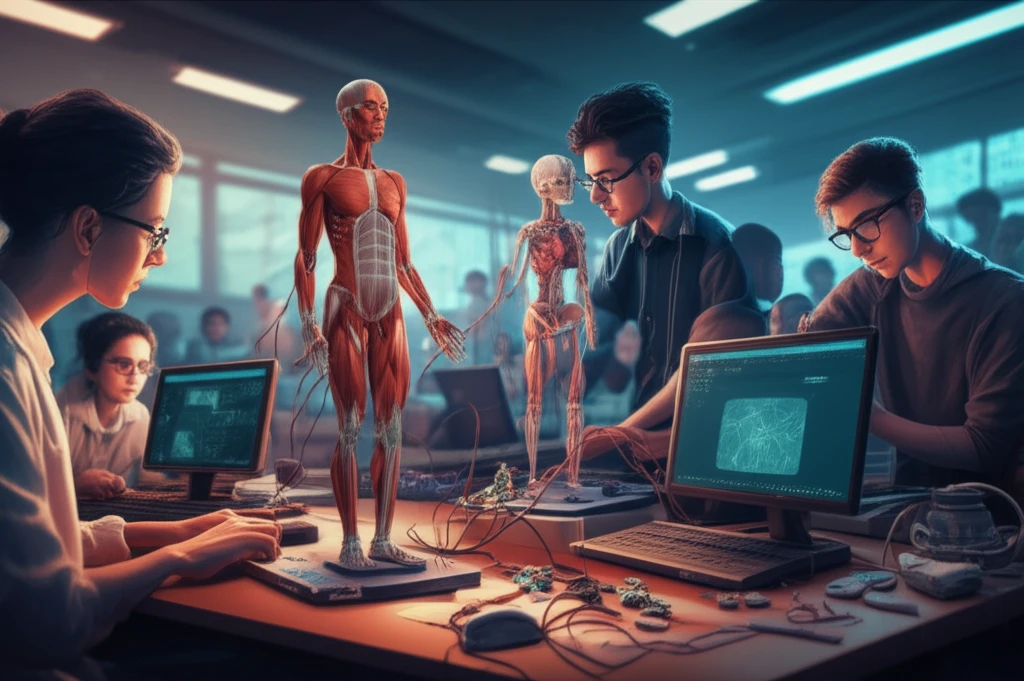
Unlock Your Fitness Potential: How Hands-On Learning Can Transform Your Biomechanics Course
"Struggling to grasp complex movement concepts? Discover how guided, hands-on activities can boost your biomechanics learning and enhance your understanding of the human body."
Kinesiology, the study of human movement, relies heavily on understanding human anatomy. Biomechanics, a core component of kinesiology, often challenges students due to its application of physics principles to the human body. Many find it difficult to translate theoretical knowledge into practical understanding.
Traditional biomechanics courses often rely on lectures, which can be abstract and difficult to relate to real-world movements. While laboratory experiences can enhance learning, they are often limited due to cost and time constraints. This creates a need for alternative teaching methods that can effectively engage students and improve their grasp of biomechanical principles.
This article delves into research exploring the effectiveness of integrating hands-on activities into a lecture-based qualitative biomechanics course. We'll examine how these activities, particularly when guided, can enhance student performance and provide a more embodied and lasting learning experience, potentially reshaping how biomechanics is taught.
The Power of Doing: How Hands-On Activities Enhance Learning

Research from Washington State University investigated the impact of incorporating hands-on activities into a biomechanics course. The study compared a traditional lecture format with one that included guided and unguided hands-on activities during lectures. Student performance on tests and course evaluations were compared between the two formats to determine if the hands-on approach improved learning.
- Skeletal Models: Students used skeletal models during lectures to interact with the bones of each joint as it was discussed. This provided a tangible way to visualize and understand the relationships between different anatomical structures.
- Electromyography (EMG): Following lower limb lectures, students used EMG units to measure the muscle activity of two muscles simultaneously. This allowed them to see in real-time how muscles activate during different movements.
- Isokinetic Dynamometer: Students used an isokinetic dynamometer to assess and practice various movements. This device allowed them to measure force and velocity, providing a quantitative understanding of muscle performance.
Reimagining Biomechanics Education: A Path Forward
The findings of this study highlight the potential of hands-on activities to transform biomechanics education. By incorporating these interactive methods, educators can create a more engaging and effective learning environment for students.
Furthermore, the research suggests that guided hands-on activities are more effective than unguided ones. This implies that structured activities with clear learning objectives are crucial for maximizing the benefits of this approach.
As biomechanics continues to evolve, embracing innovative teaching methods like hands-on activities will be essential for preparing the next generation of kinesiologists and fitness professionals. By shifting towards a more active and embodied learning paradigm, we can unlock the full potential of students and foster a deeper appreciation for the wonders of human movement.
